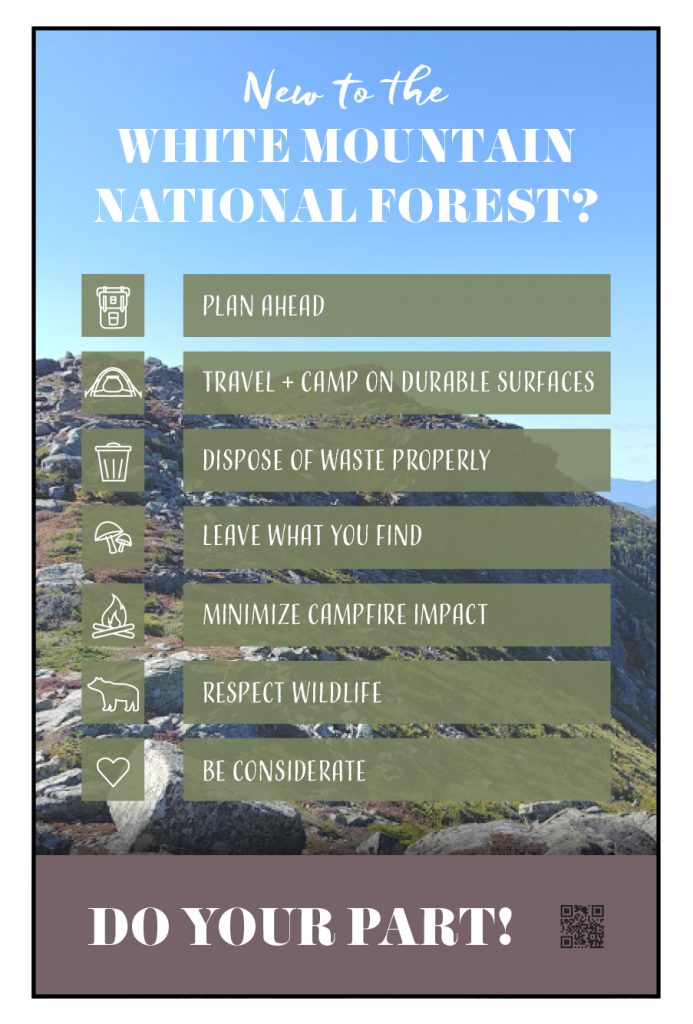Hike Safe Code, 7 Leave No Trace Principles, and more
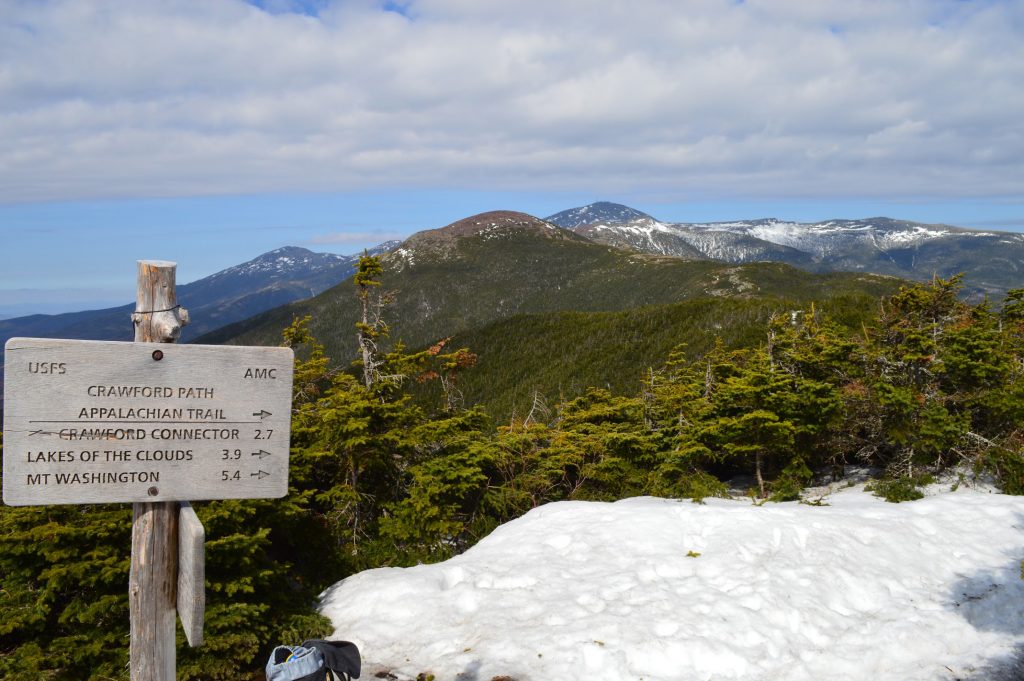
Before deciding to hike, it is always a good idea to be familiar with hiking etiquette, trail safety, such as the Hike Safe Code, and the Leave No Trace Principles. To learn more about each, visit the webpages mentioned below.
Hiking Etiquette
The National Park Service provides a great list for hiking etiquette that is true of most trails throughout the United States:
- Know your right of way
Knowing the right of way refers to hikers and bicyclists. When hiking down, give right of way to those climbing up unless they step aside to rest. Cyclists should give hikers the right of way by stopping and stepping aside. Be sure to check the trail regulations before biking on a trail. - Make yourself known
When encountering other hikers, it is likely they will offer a friendly greeting or nod; responding will keep a friendly atmosphere on the trail. If approaching behind another, let them know you would like to pass. - Stay on the trail
Do not step off trail unless absolutely necessary. Going off trail often damages the plant and animal species found along the sides. When possible, try to step on rocks, if there are no rocks stick to the very middle of the trail. Do not step around puddles as this expands its size, as well as damage surrounding plant life. - Do not disturb wildlife
Keep your distance when approaching wildlife. Do not feed wildlife no matter how cool the photo would be for your Instagram. - Be mindful of trail conditions
Research trail conditions ahead of time, keeping in mind the recent weather. Be prepared for icy conditions from October-May. Always be prepared to turn around if the conditions are dangerous. - Take time to listen
NPS says it best, “Let nature do the talking.” That means keep electronic noise at bay. No one wants you to blast your music down the trail. Bring headphones if you absolutely need your music. The wildlife and fellow hikers will appreciate it. - Be aware of your surroundings
Always be aware of surrounding, limitations, weather, and other conditions before getting on a trail. Research and prepare ahead of time. Read this if hiking in bear country.
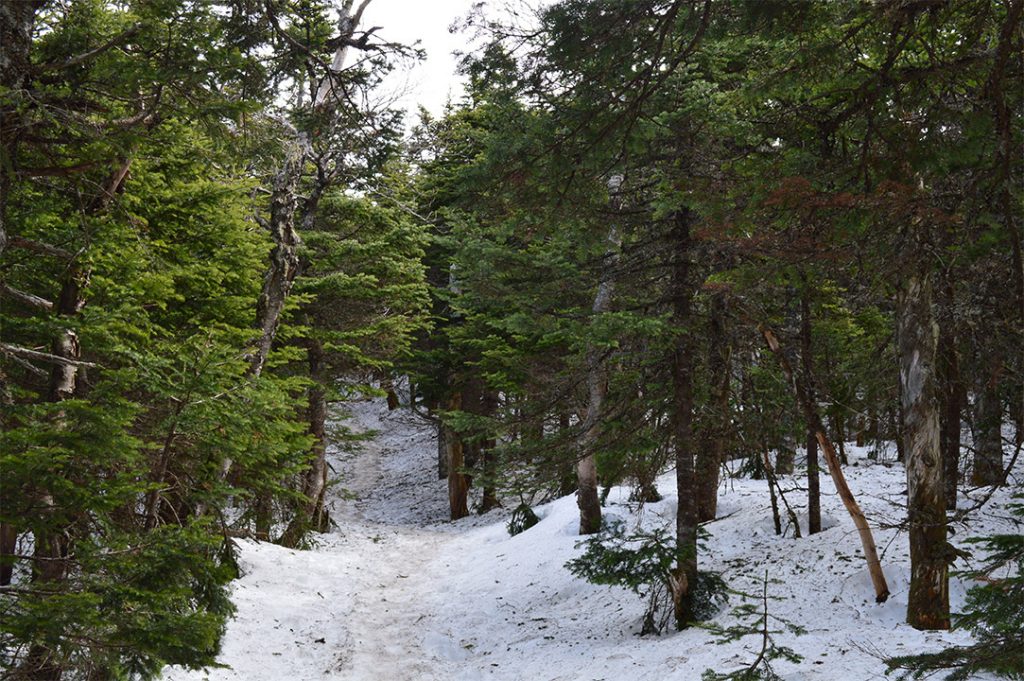
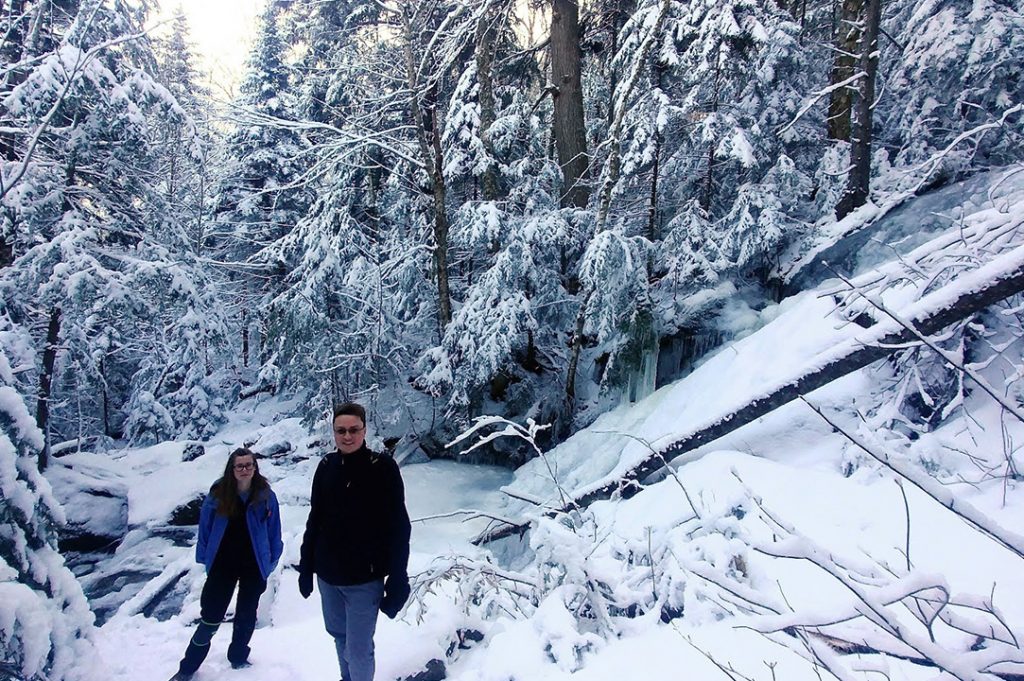
Hike Safe Code
Hikesafe.com is a great resource for hiking safety and preparation to avoid dangerous conditions by NH’s Fish and Game. This code is good to reference for any level hiker. Safety is always important when it comes to hiking!
The Code: You are responsible for yourself, so be prepared:
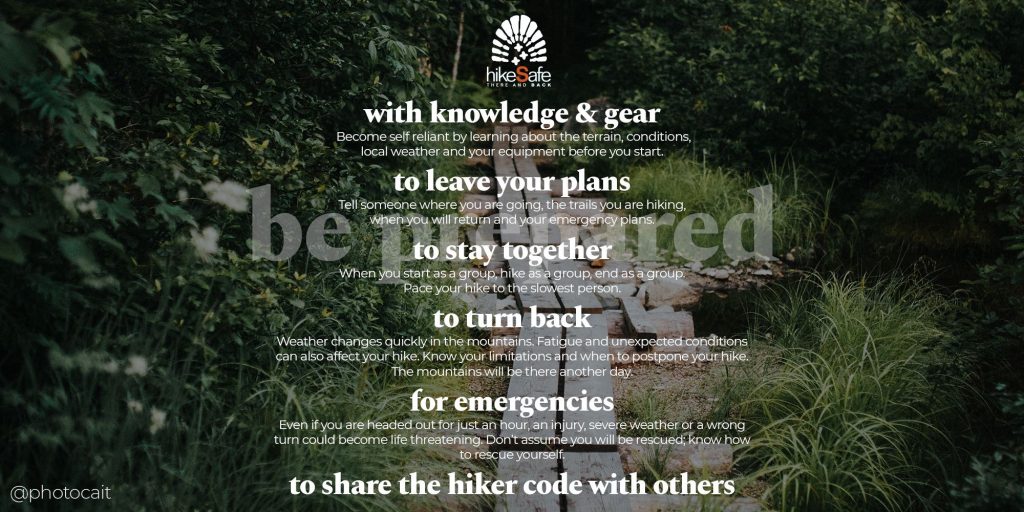
- Knowledge and gear
Do not be a dependent hiker; take action to be self-reliant. Learn about the trail, conditions, weather, and required equipment. Hiking in NH it is important to always have warm layers because even on a warm day, the wind chill can be brutal at times. Check out Hike Safe’s packing list for an idea of what to pack. - Leave your plan
Always leave your plan with someone, including trail names, estimated time, emergency plans, and other information. - Stay together
When hiking with a group, hike as a group; pace the hike to the slowest hiker. Be sure everyone is prepared, and ready to turn if needed. - Turn back
The main reasons to turn back include weather change, fatigue/injury, unexpected conditions, and running out of time. Winter hiking there is less daylight, so keep that in mind before planning to hike. Know your limitations. - Emergencies
“Don’t assume you will be rescued; know how to rescue yourself.” Know how to use a map and compass. STOP: Stop, think, observe, plan — decide on a plan and stick to it. Do not wander far from your original route, blow your whistle, and stay warm and hydrated. - Share the code
Read all the details.
Leave No Trace
